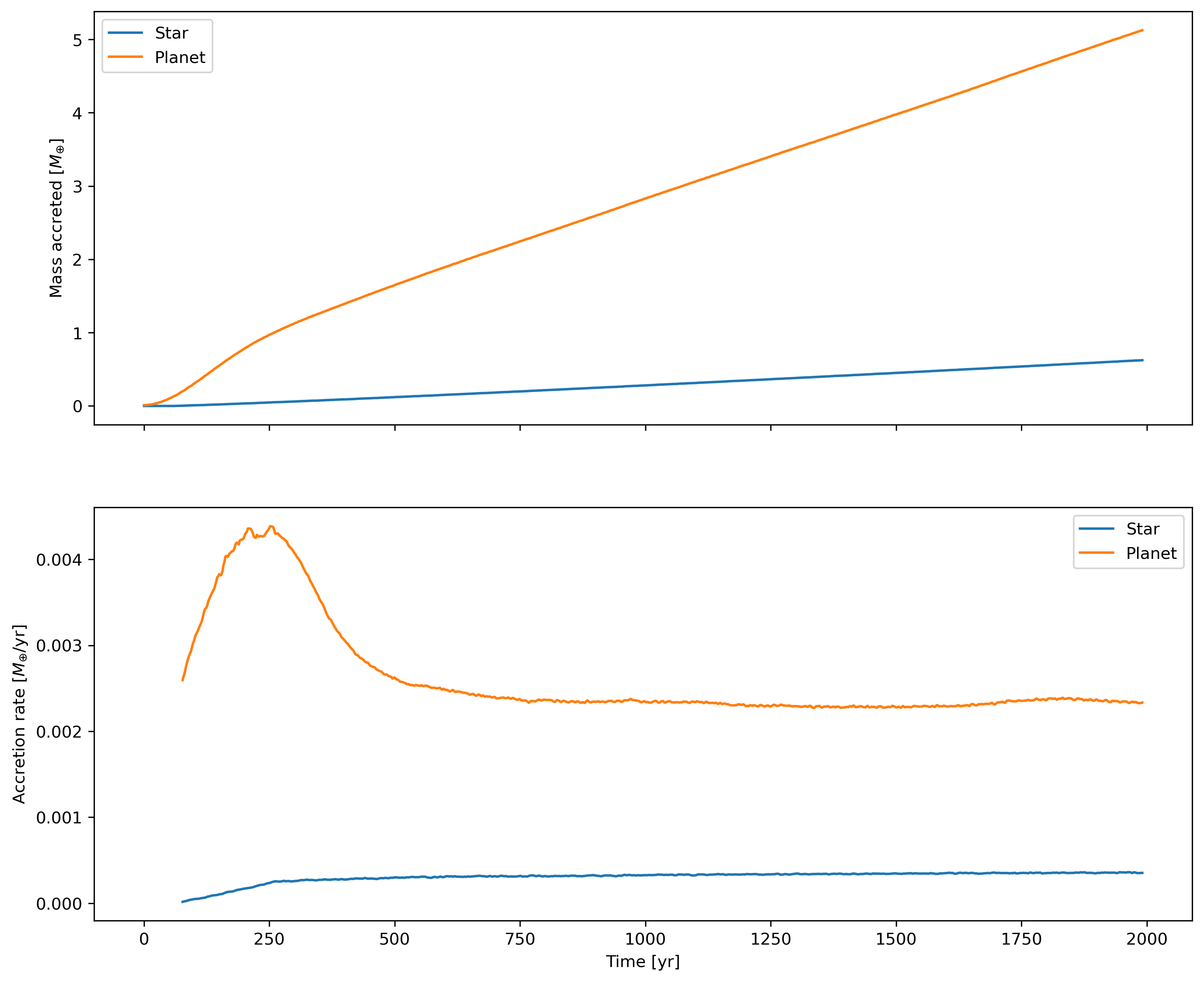Accretion onto sinks¶
Plot mass accretion and accretion rate onto sink particles.

Note
The data is from the example dataset of a Phantom simulation with a single dust species using the separate particles (or “2-fluid”) method with an embedded planet.
import matplotlib.pyplot as plt
import numpy as np
import plonk
# Load simulation
sim = plonk.load_simulation(prefix='disc')
sink_labels = ('Star', 'Planet')
# Initialize figure
fig, ax = plt.subplots(ncols=1, nrows=2, sharex=True, figsize=(12, 10))
# Loop over sinks and plot
for idx, sink in enumerate(sim.time_series['sinks']):
# Time in years
sink['time [year]'] = (sink['time [s]'].to_numpy() * plonk.units('s')).to('year').m
# Mass accreted in Earth mass
sink['mass_accreted [earth_mass]'] = (
(sink['mass_accreted [kg]'].to_numpy() * plonk.units('kg'))
.to('earth_mass')
.magnitude
)
# Calculate accretion rate
sink['accretion_rate [kg / s]'] = np.gradient(
sink['mass_accreted [kg]'], sink['time [s]']
)
# Take rolling average
accretion_rate = (
sink['accretion_rate [kg / s]'].rolling(window=100).mean().to_numpy()
)
# Convert to Earth mass / year
sink['accretion_rate [earth_mass / year]'] = (
(accretion_rate * plonk.units('kg/s')).to('earth_mass / year').magnitude
)
# Plot
sink.plot(
'time [year]',
'mass_accreted [earth_mass]',
ax=ax[0],
label=f'{sink_labels[idx]}',
)
sink.plot(
'time [year]',
'accretion_rate [earth_mass / year]',
ax=ax[1],
label=f'{sink_labels[idx]}',
)
# Set plot labels
ax[0].set_ylabel('Mass accreted [$M_{\oplus}$]')
ax[1].set_xlabel('Time [yr]')
ax[1].set_ylabel('Accretion rate [$M_{\oplus}$/yr]')